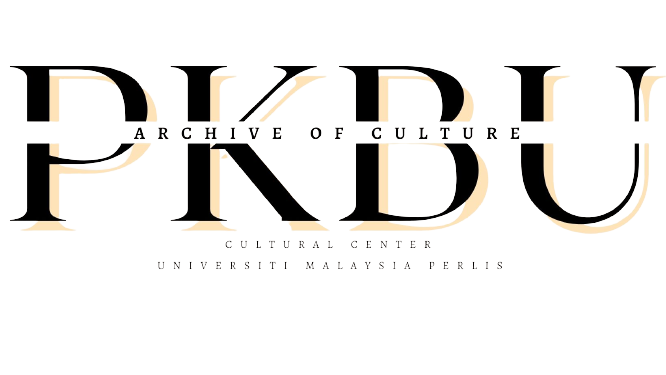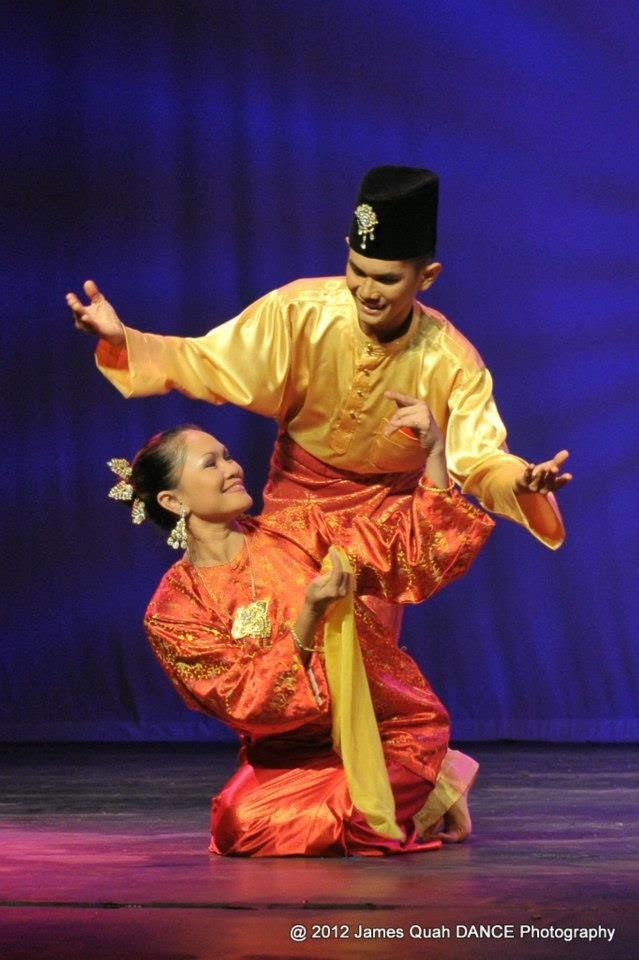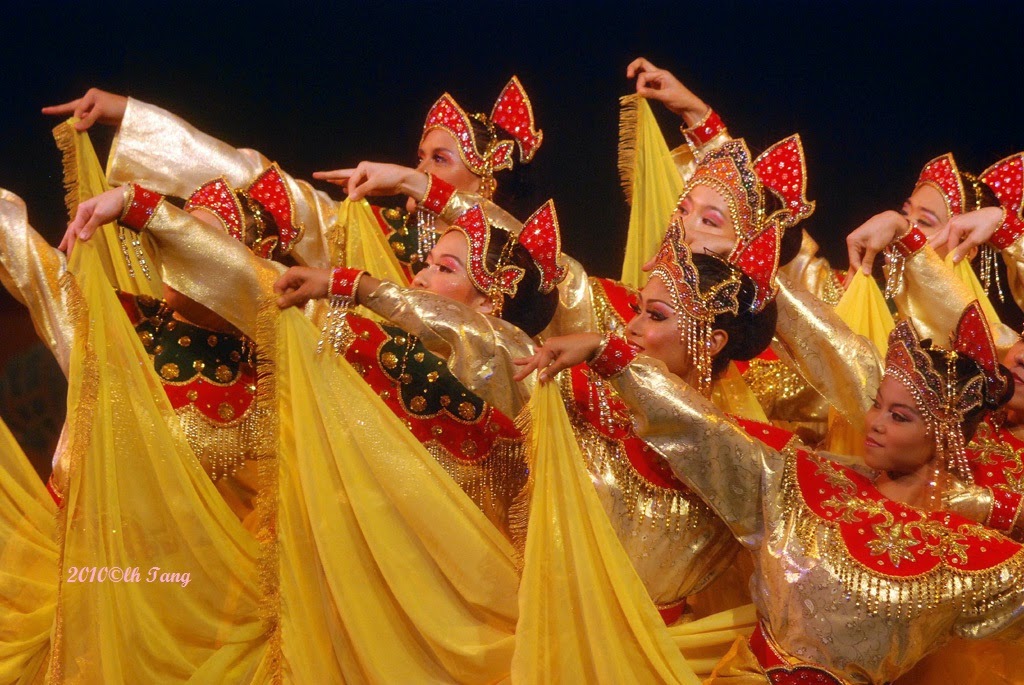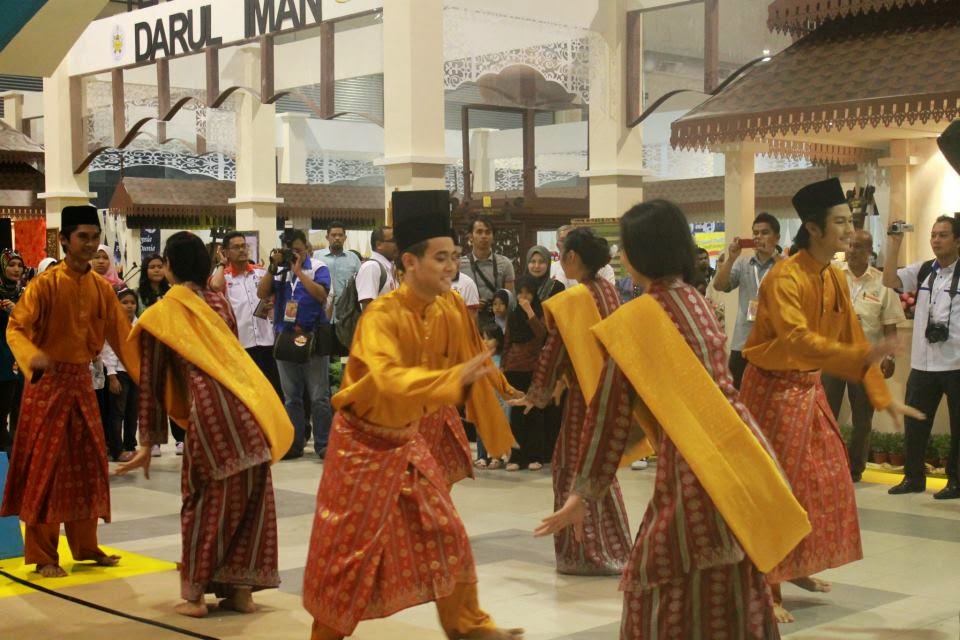
GALLERY OF ART

Tarian Canggung
Canggung Dance is the identity dance of Perlis which originates from a Makyung Laut dance. The dance was first introduced during the Japanese occupation around 1941. It was first performed by two sibling dancers in an entertainment festival for the Japanese army and the public held in the city of Kangar. From this performance, Canggung spread to the whole state of Perlis and subsequently became a famous folk dance.
The Canggung dance variation has similarities with the Ronggeng dance, but it has its own value. The originality lies in the singing in return for verses and this is how the audience gets entertained. Some of his poems are satirical, alluring, teasing, joking and so on.
The dancers will dance in pairs and the princess dancers hold a handkerchief, dance and take turns singing while spontaneously reciprocating verses with the prince dancers. The princess dancers wore batik cloth, long kebaya and edited flowers in buns. The prince dancers wear Malay clothes and bersongkok. The Canggung performed during the harvest season and at weddings and gatherings.

Layang Emas
According to history, this dance was created when the King of Perlis sent a golden flower tribute to the Siamese government at the time the state was under the auspices of the Siamese government. The delivery of the tribute was done by riding an elephant. At that time, an elephant herder called Tuk Jambul and his friend Ecan created the song `Layang Mas'. After returning from Siam, the two elephant herders created the 'Layang Mas' dance.
This dance is also one of the dances in the Terinai repertoire. A very beautiful palace dance that uses a lot of hand movements, hovering (swaying) while spinning several times, has clear shoulder movements as well as hip movements. This dance uses a long scarf tied with a belt at the waist. This shawl is held with the thumb and forefinger and is often described as a bird’s wing. This dance can only be danced by women.

Inang Kayangan
This song and dance is indeed adapted to the symbol of the state of Perlis, which is Indera Kayangan. Mak Inang Kayangan means the song Mak Inang from kayangan which comes from Perlis. This variation or dance is the same as Mak Inang, but there are many variations such as chickens competing, namely "Manikam" or plunging the hand towards the female dancer, so that the female dancer has to push the hand of the male dancer.
Another interesting variation is that the dancer uses a shawl when dancing, if the female dancer is willing to accept the shawl handed by the male dancer it means that the dancer has already agreed to be in touch with her.
.jpg)
Ayam Didik
Ayam Didik is a title for chickens that are kept and pampered. Similarly, the element of this dance is a dance that shows the pampering of the dancers. This dance is coupled with his song 'Ayam Didik' which is very captivating and very friendly to listen to, accompanied by original music using gongs, drums and violin.
Ayam Didik 'is a lively dance and creates warmth to the dancers in pairs. While dancing, the dancers joke with each other and try to seduce each other. Like the Canggung dance, this dance also often exchanges verses. His poems are more about love and intimacy. The dance and singing of ‘Ayam Didik’ is actually often together in Canggung performances, performed during the rice harvest or at weddings and gatherings as entertainment to the guests.

Terinai
Terinai is a well -established art in the state of Perlis. It is usually performed in a palace crowd, with a flute rhythm (seven holes - top six, bottom hole - one), a pair of drums (small faces beaten using a kind of rattan tied and braided) that are soft and two gong seeds - carrying the spirit implicit in in it. Terinai was also accompanied by the beat of "Gendang Terinai" by playing three songs, namely Temang Welo, Selong and Mak Inang.
However, it is still played at regular weddings. Of course, this rhythm once performed a beautiful and so engrossing dance, with a candle in hand, it was very moving. Such is the beauty of Malay culture, in soft there is hard, in hard there is soft and then it becomes clay and solid. Among the rhythms played are facing Terinai, Ketam Bawa Anak, Dewa Raja, Inang Cik Lang and others. The rhythm that accompanies this dance is the rhythm of Terinai's drum beats.

Inang Tua
This dance is like Mak Inang's dance, but has its own uniqueness, which is the creative result of its creator so that it becomes an original dance for the state of Perlis. This dance is a dance that was so popular in the past that it is considered as a folk dance. The performance is performed on a stage set up in the village or in the middle of a field.
This dance is danced along with other folk dances, usually performed after the rice harvest or in wedding ceremonies. The dance begins with a variation of the hands in front and rotates to the left and right, the hands up taking back and then moving forward. It is done repeatedly and usually starts with a silat dance a few steps and then does the variation. After that the dancer pulls the long cloth of the female dancer and puts it on the shoulder while continuing to dance as well as getting up.
Something interesting in this dance is that the male dancer ‘messes up’ or jokes with the female dancer by ‘stretching’ (stretching) his hand towards the female dancer, while the female dancer pushes away the male dancer’s hand. That is what is repeatedly done by each pair of dancers.
Another variation performed by male dancers is to sit while jumping frogs then followed by female dancers. After that the dancer gets up and dances again like the first variation until the dance is over.
